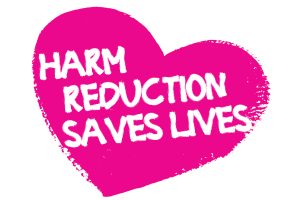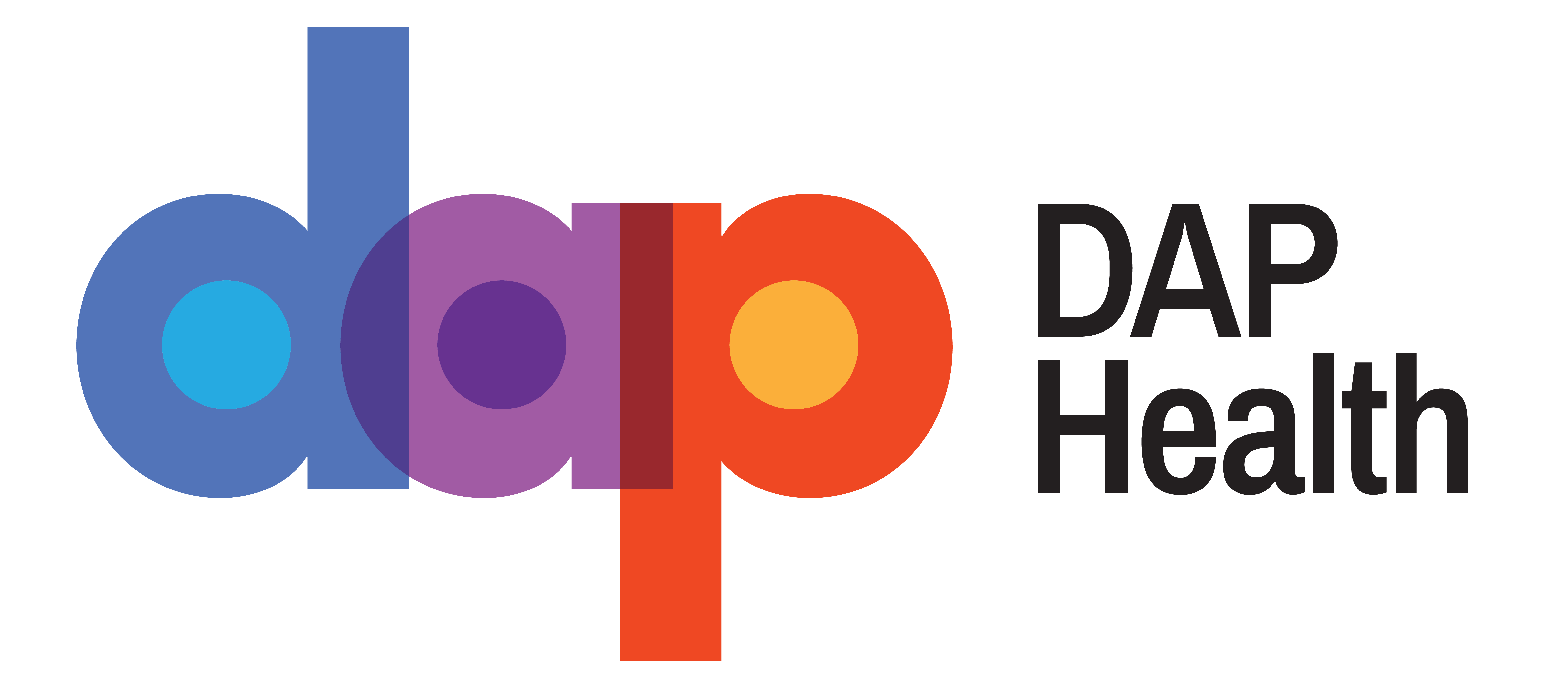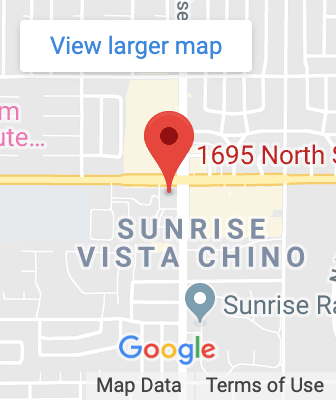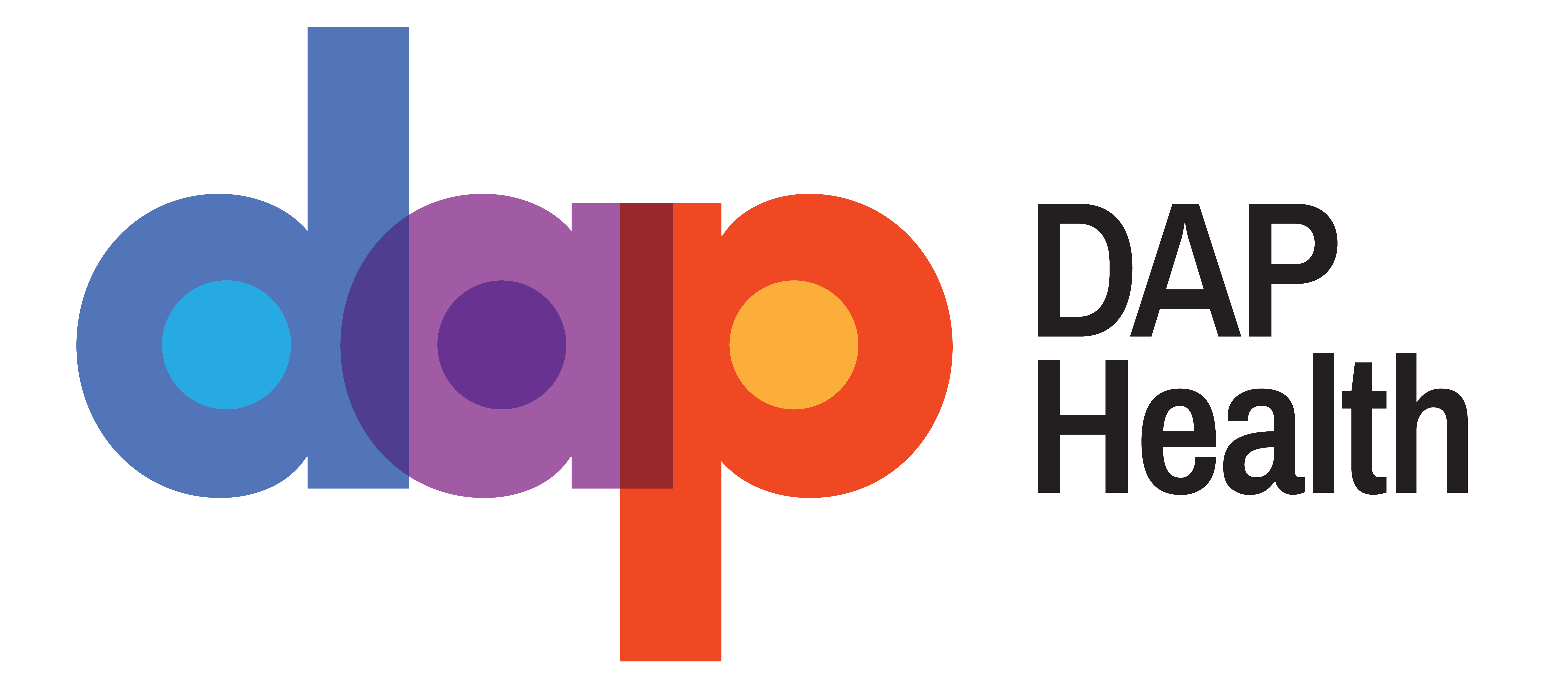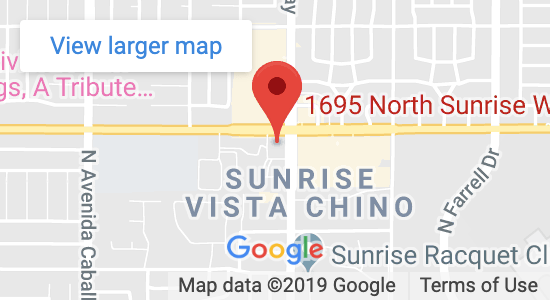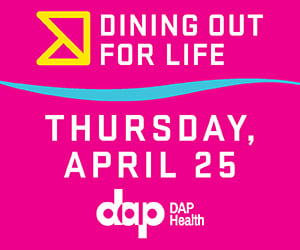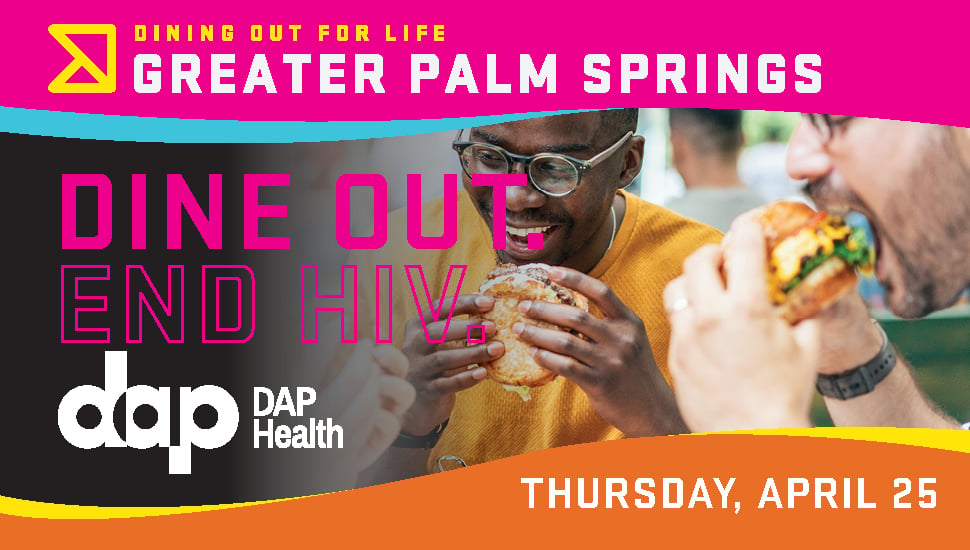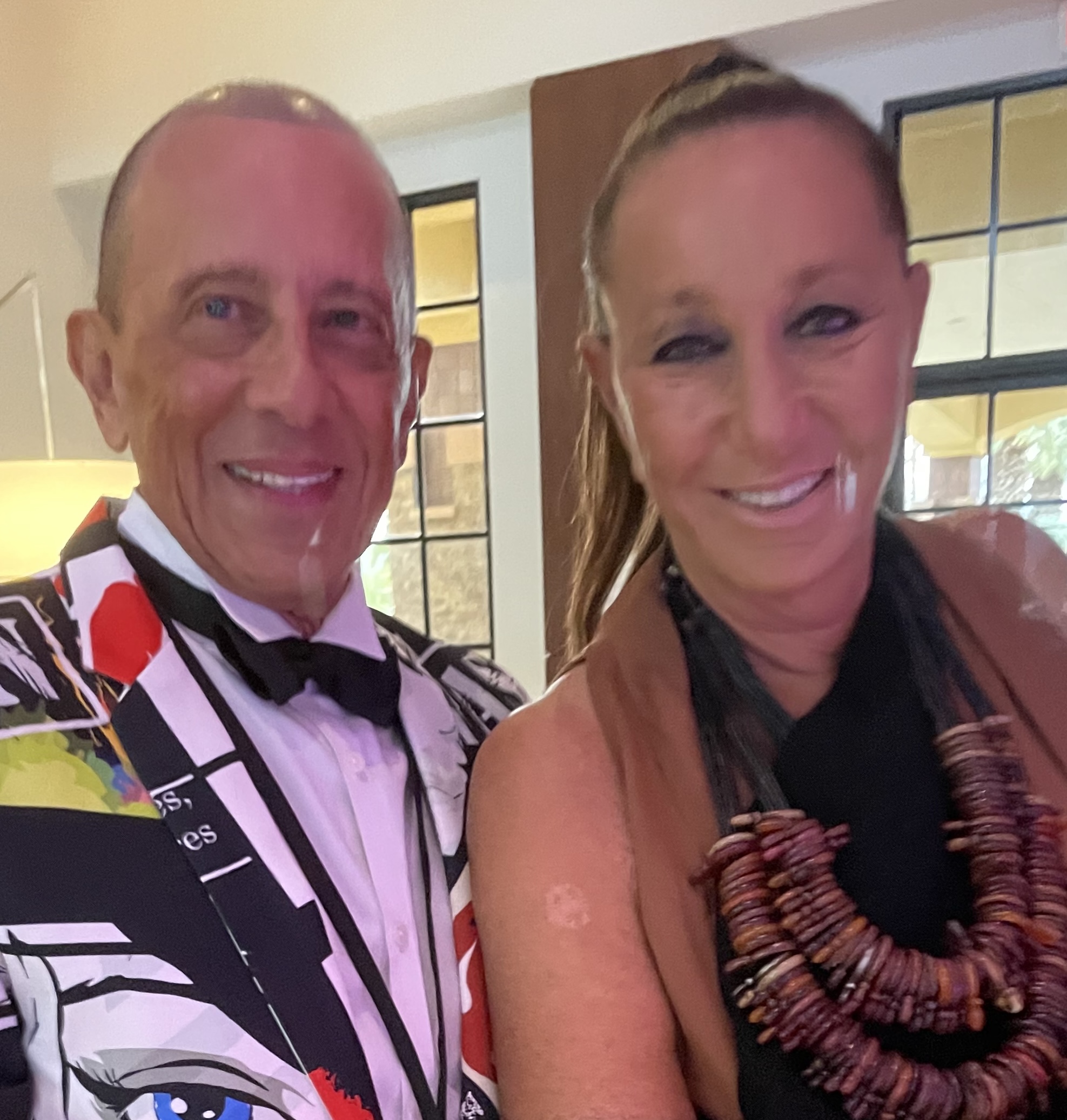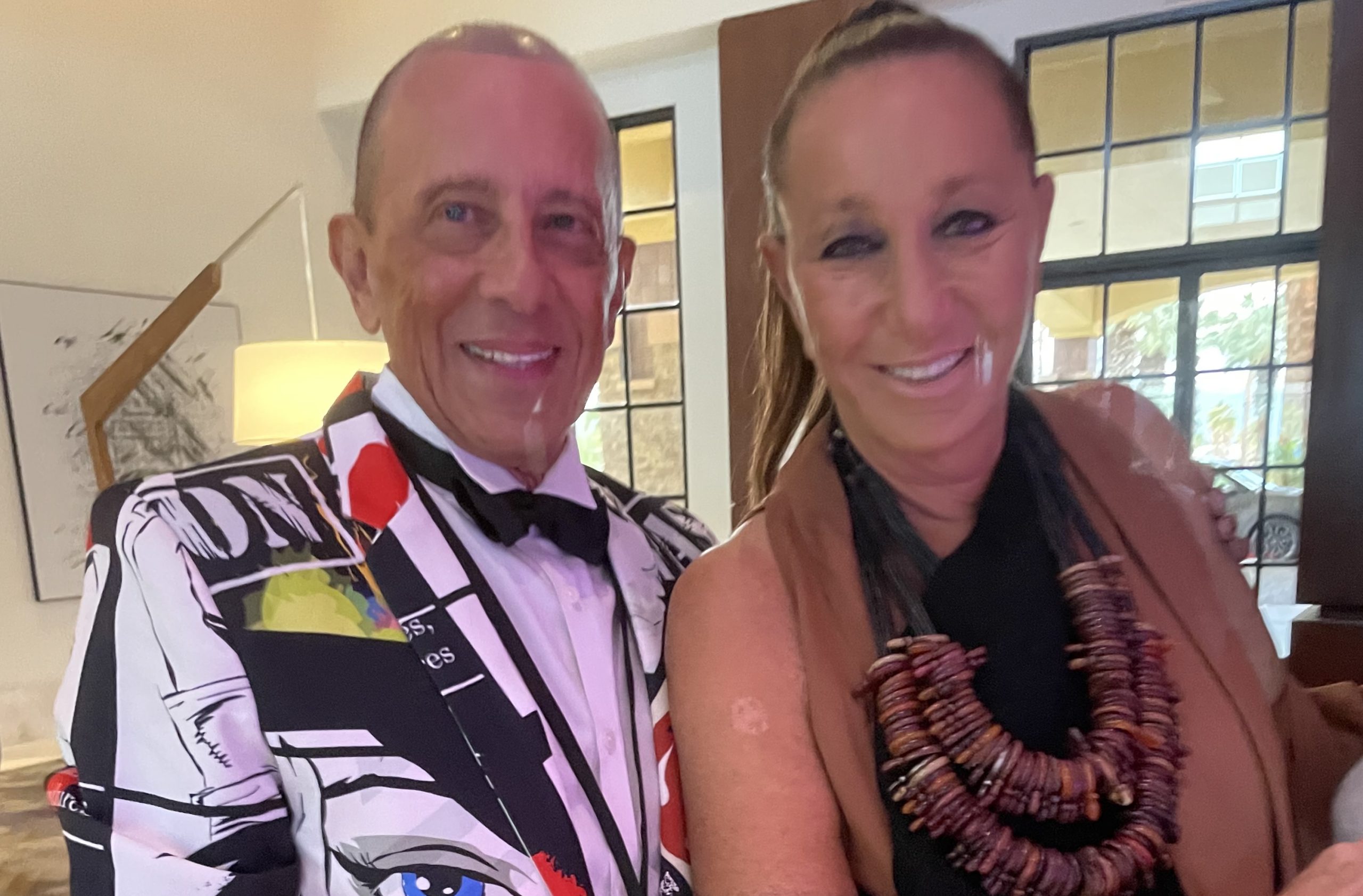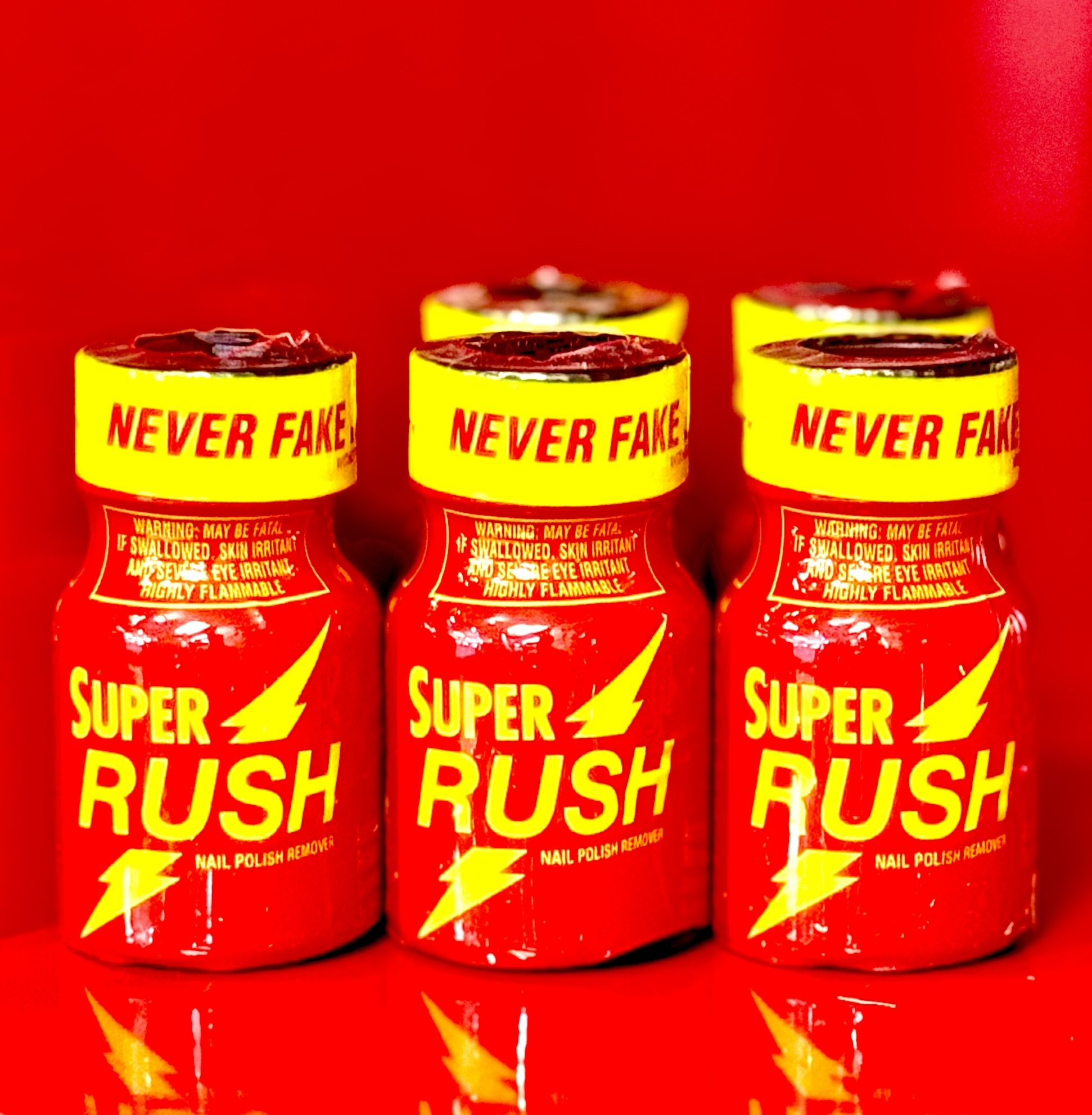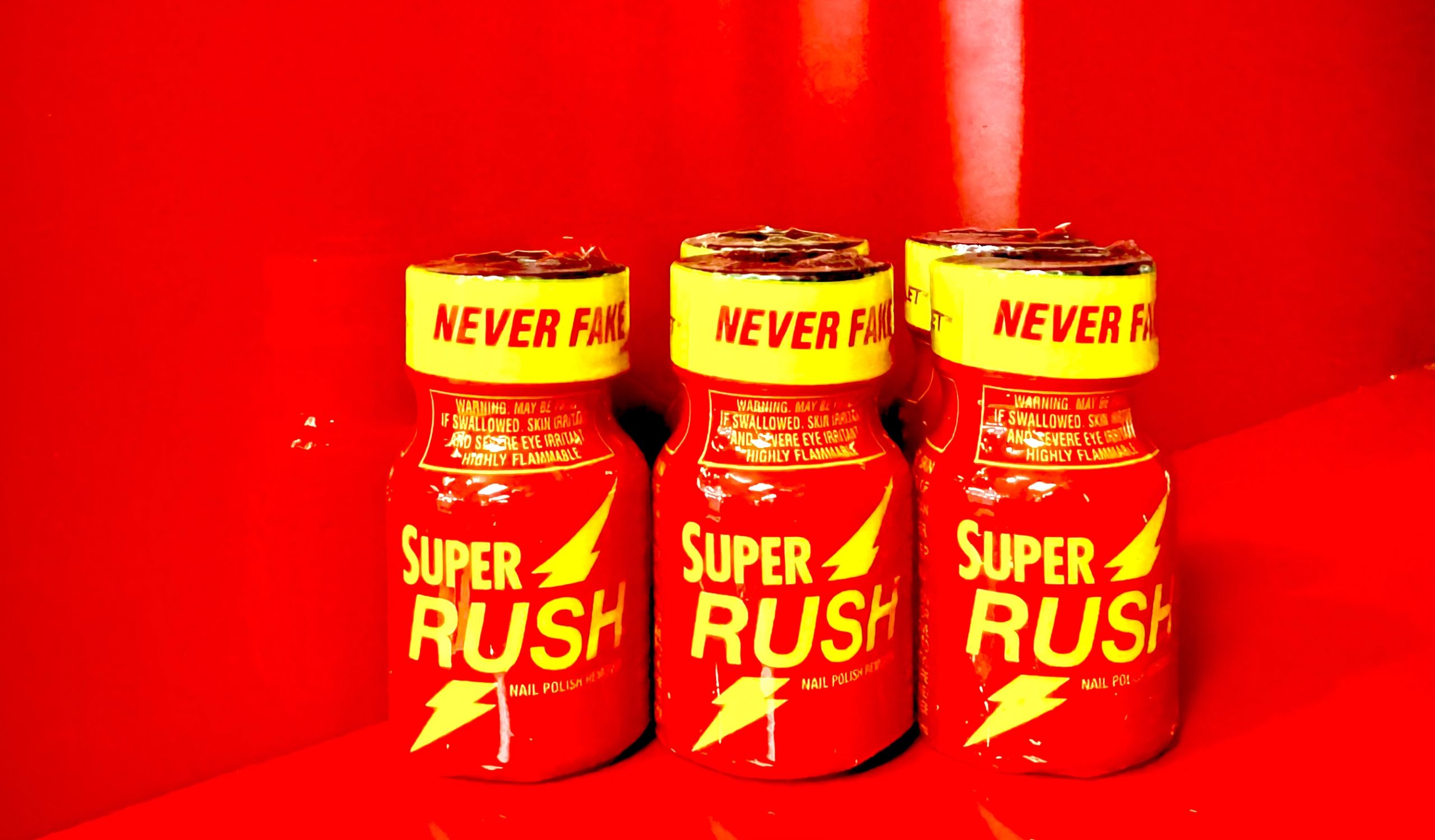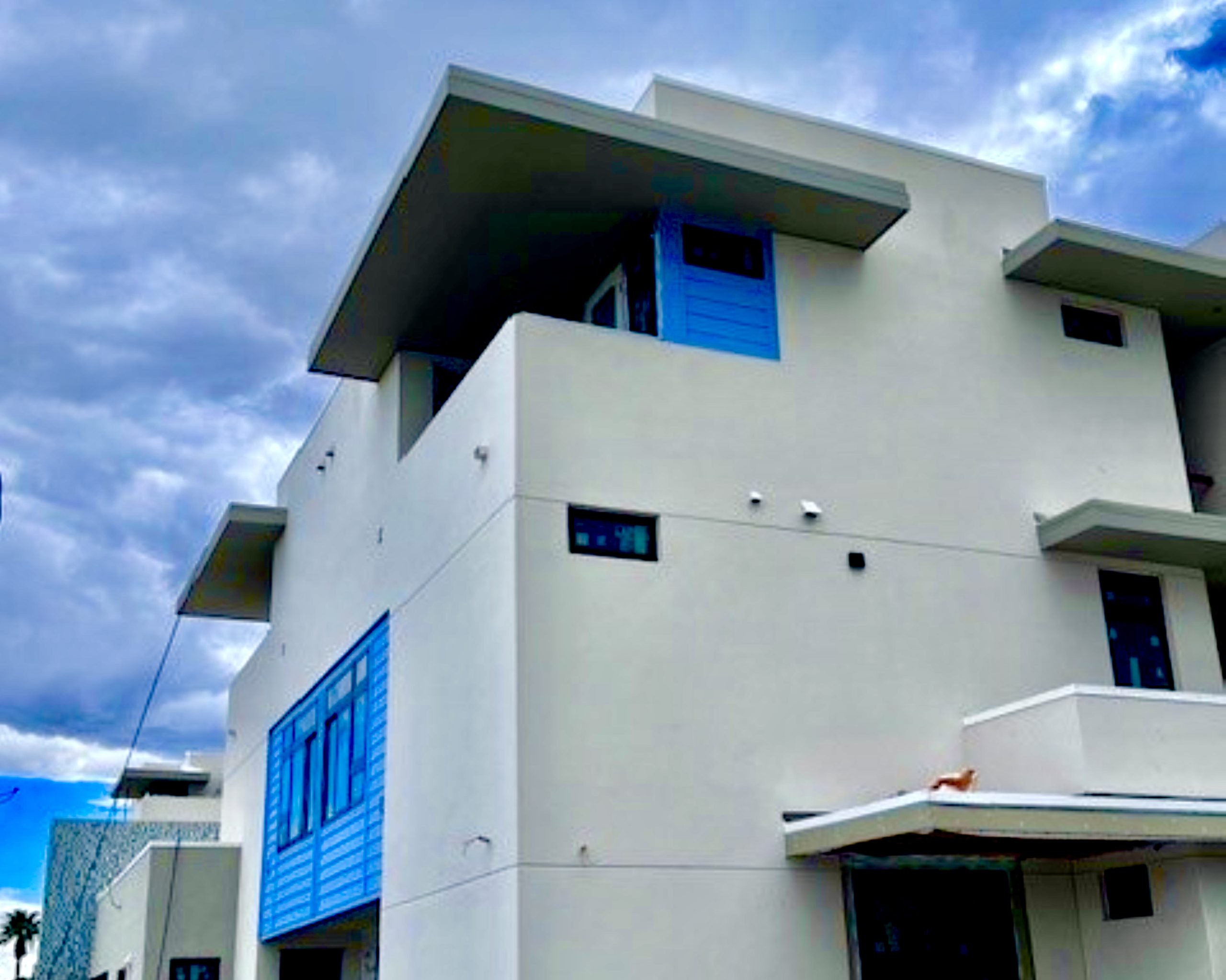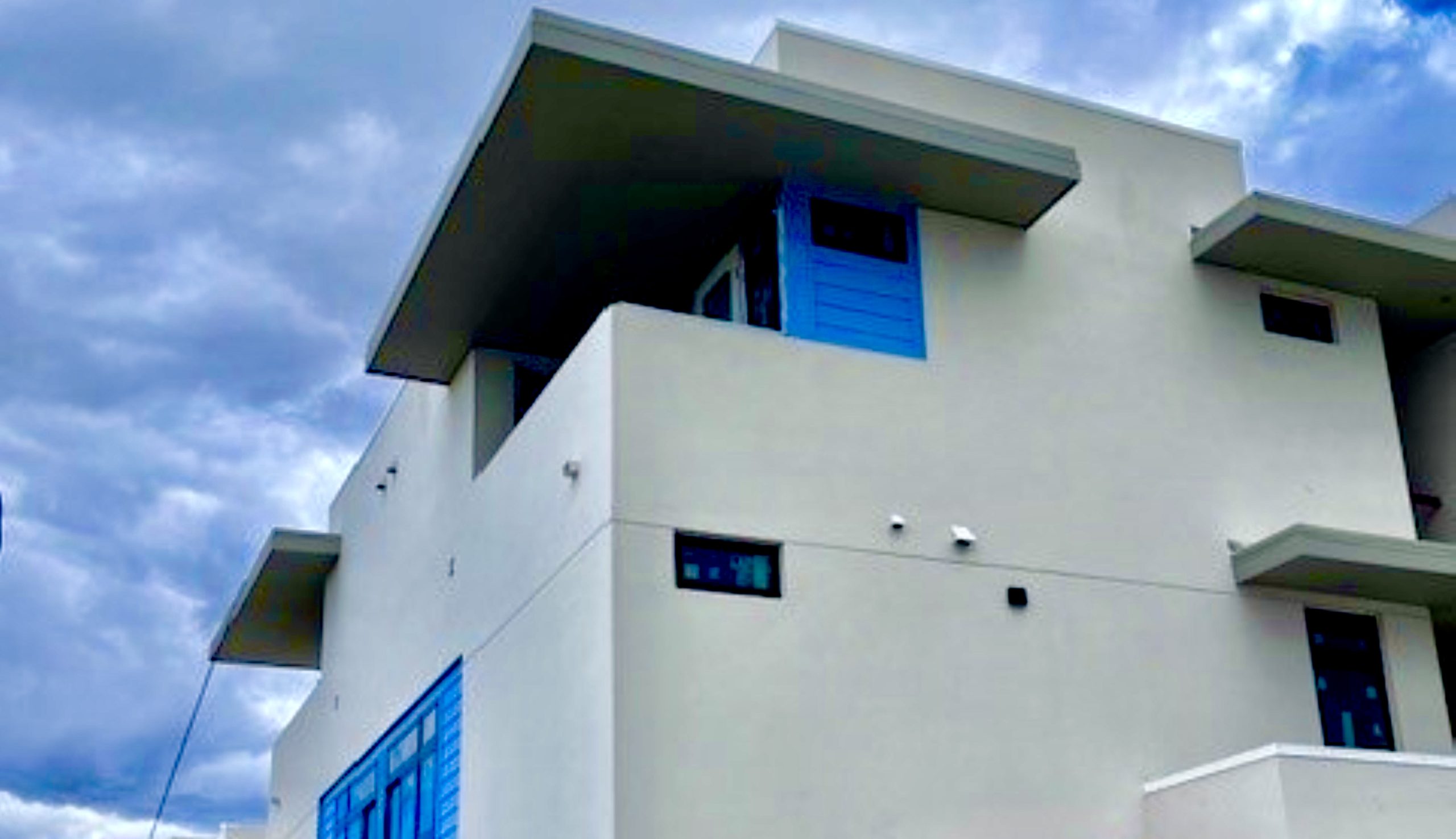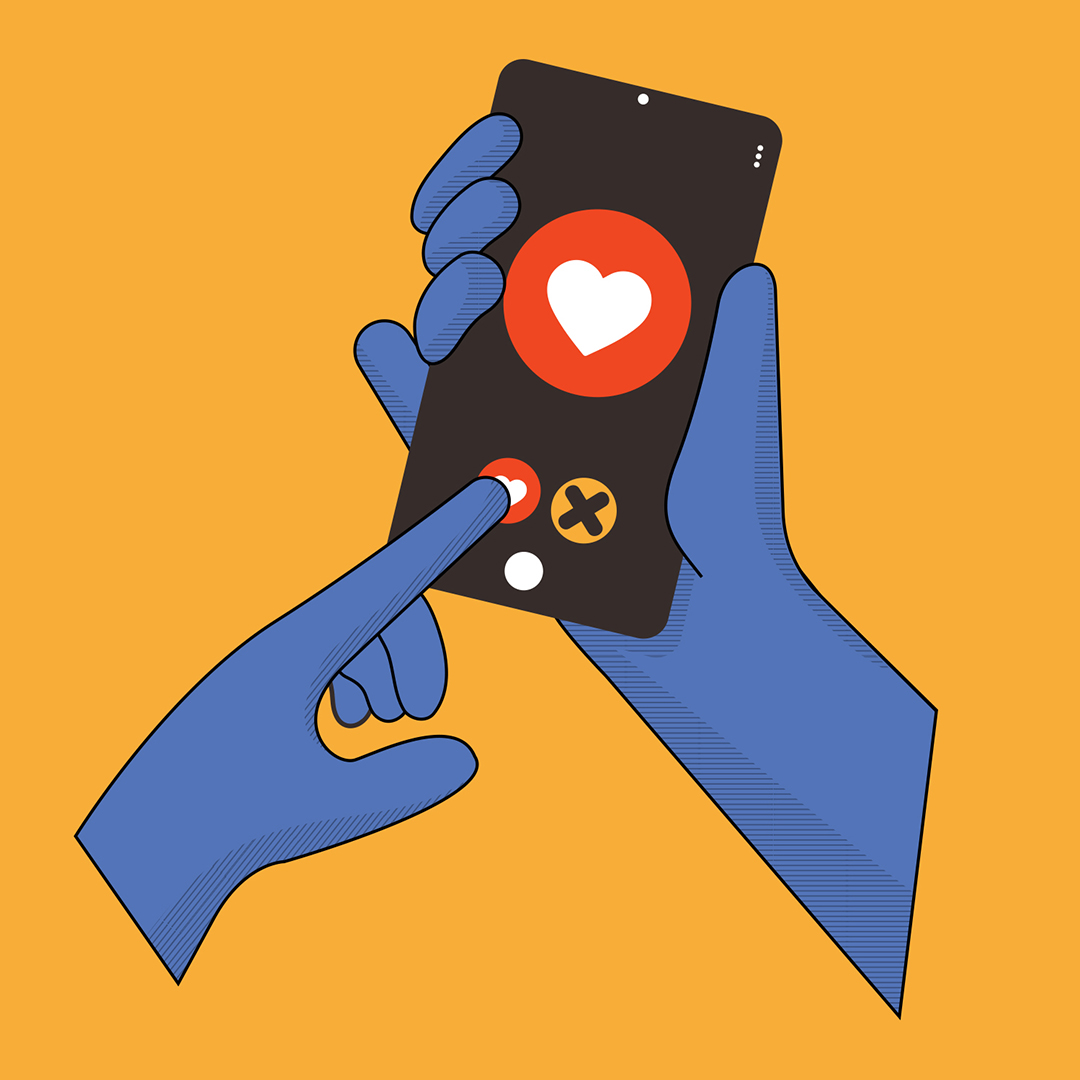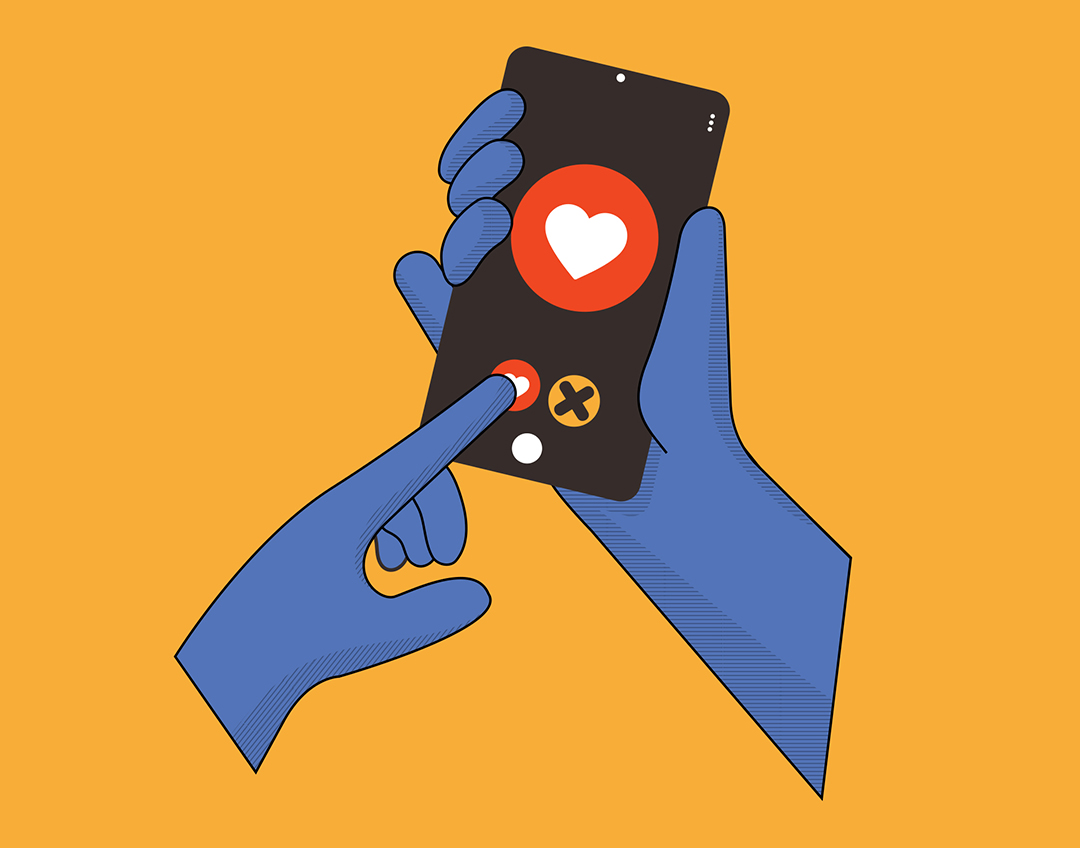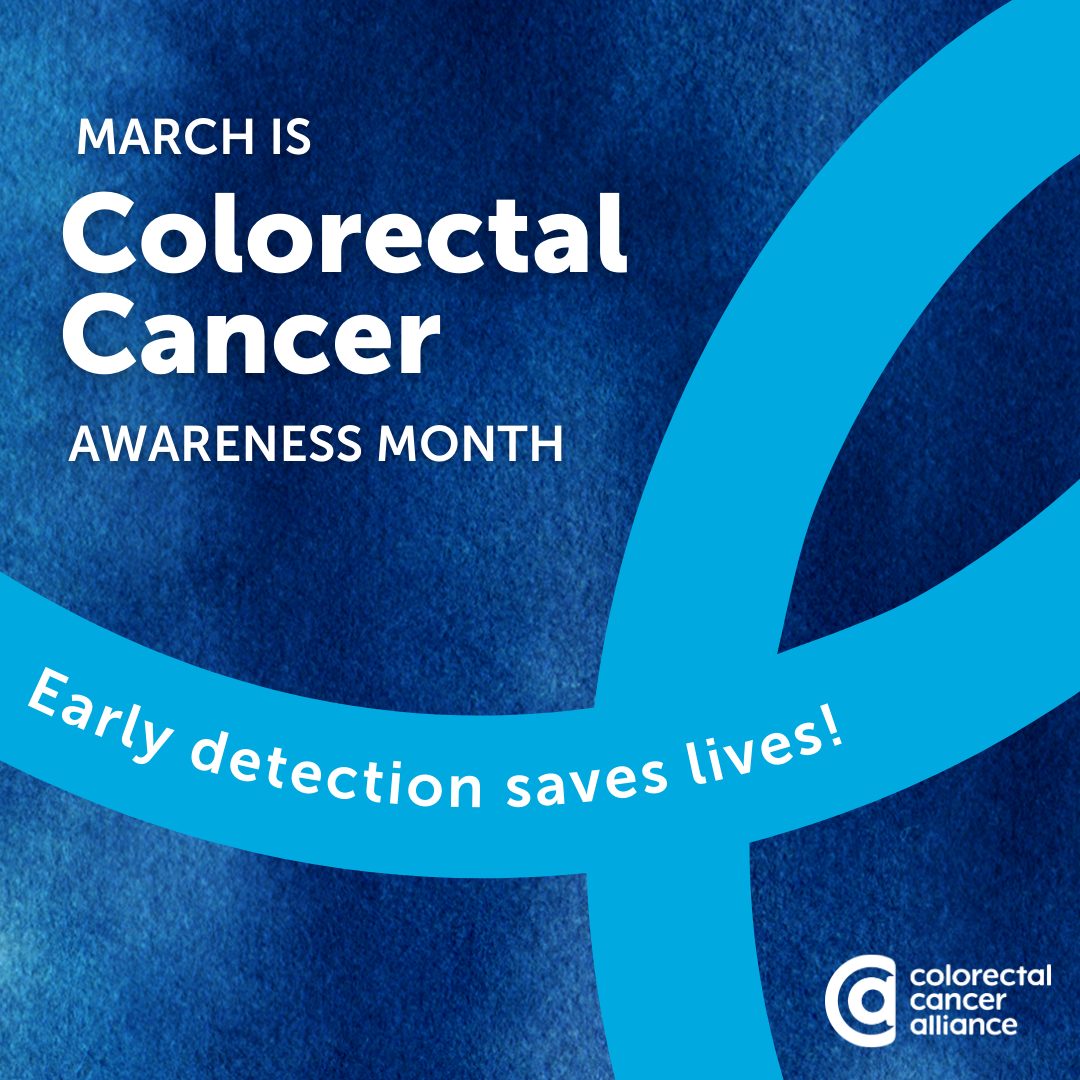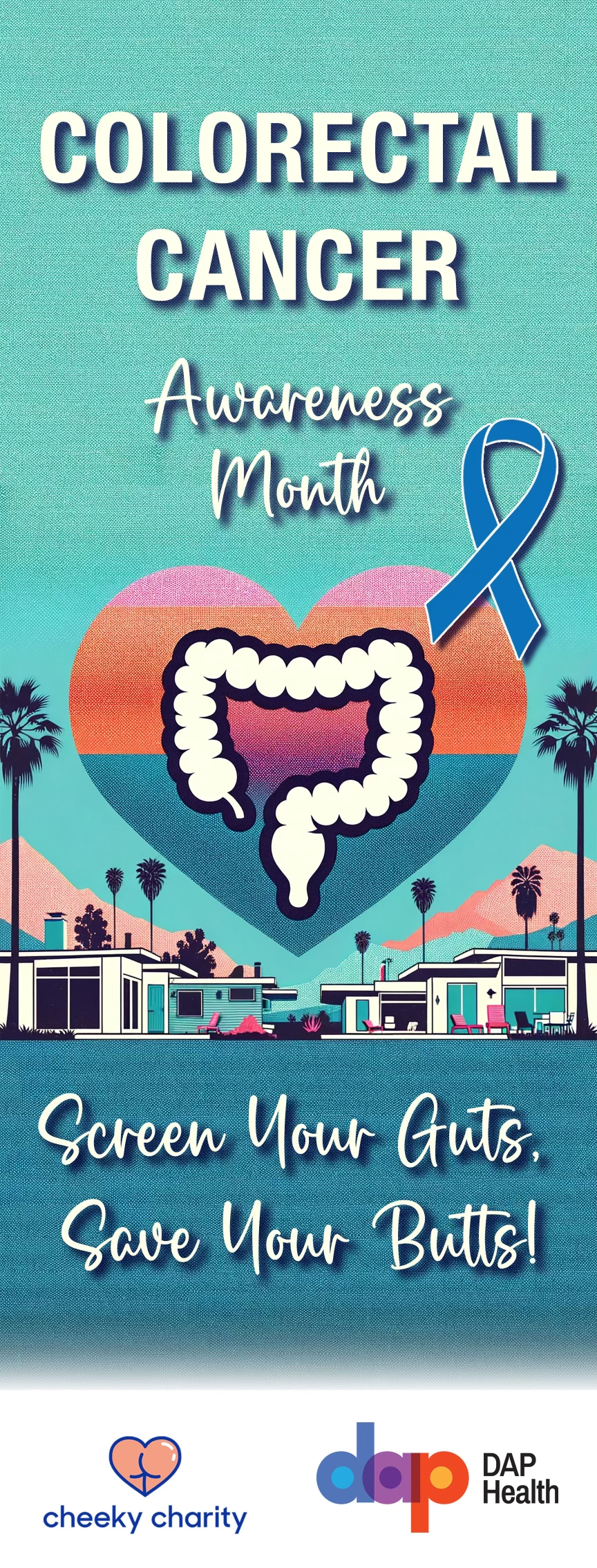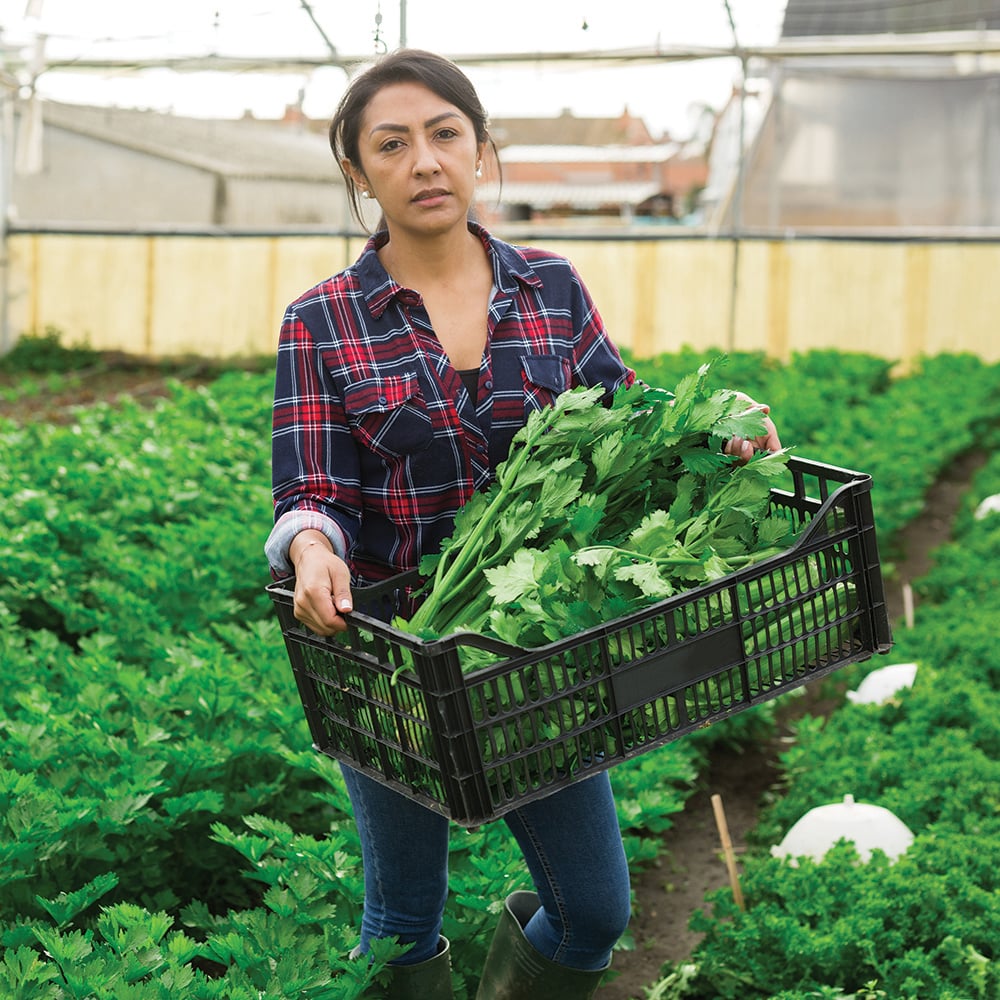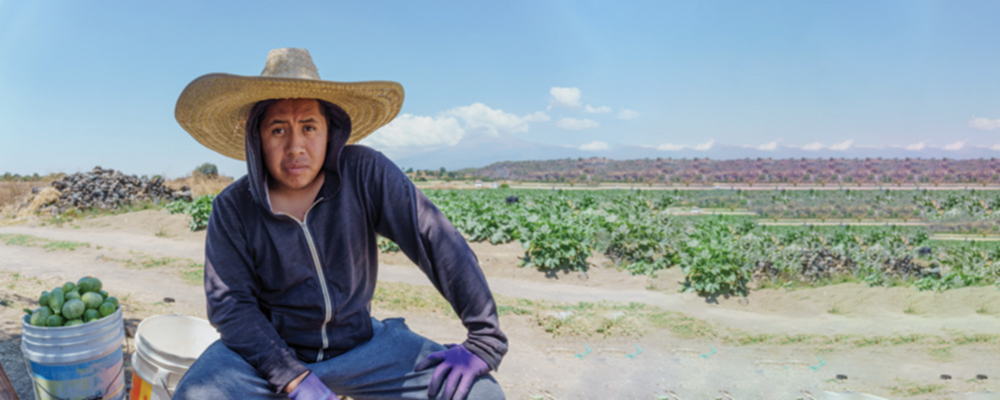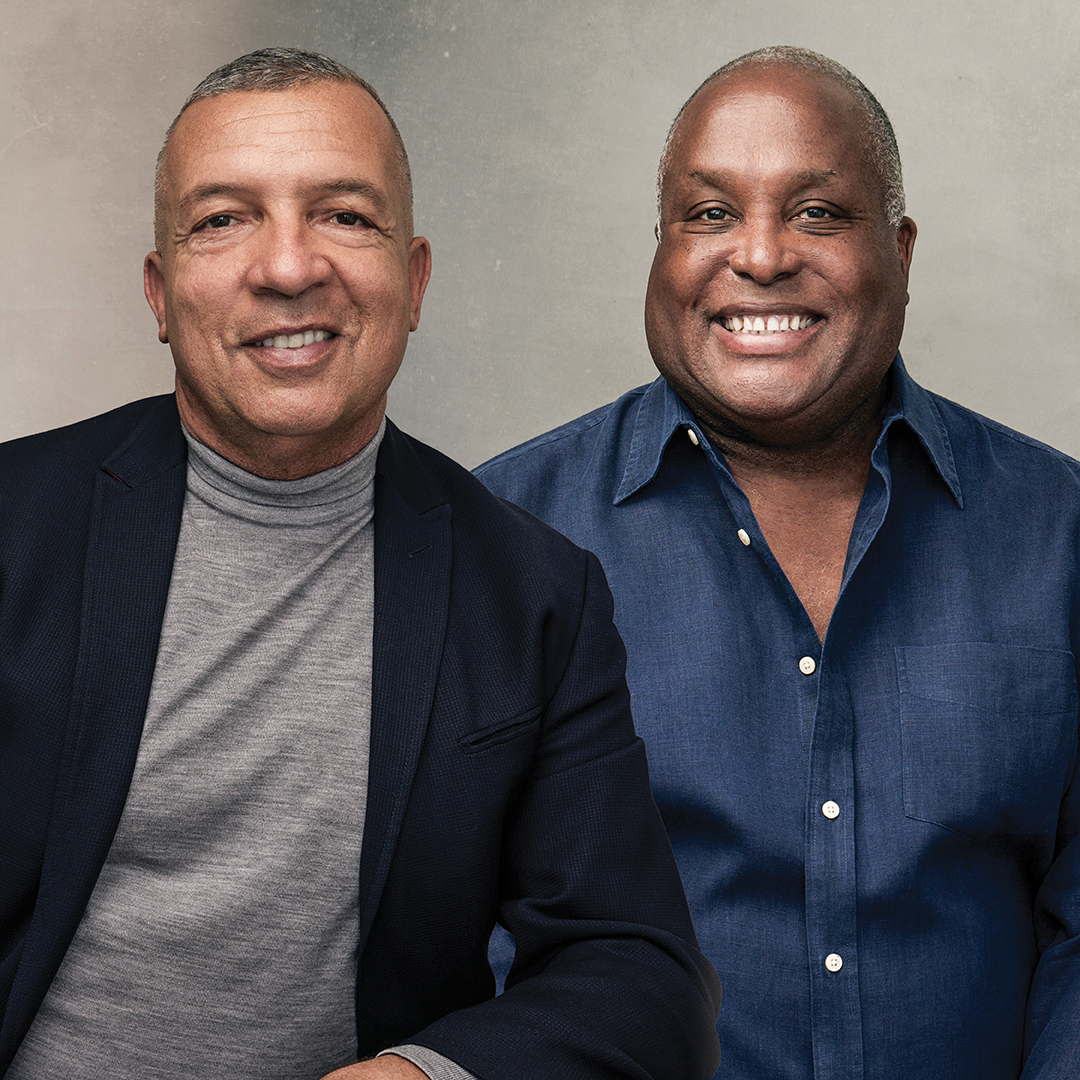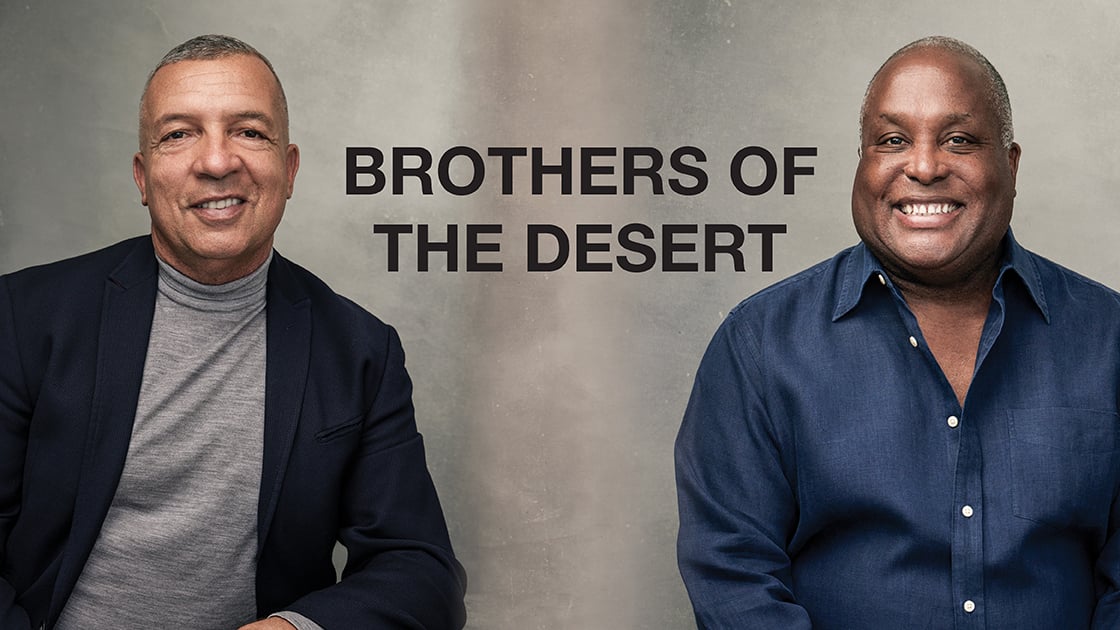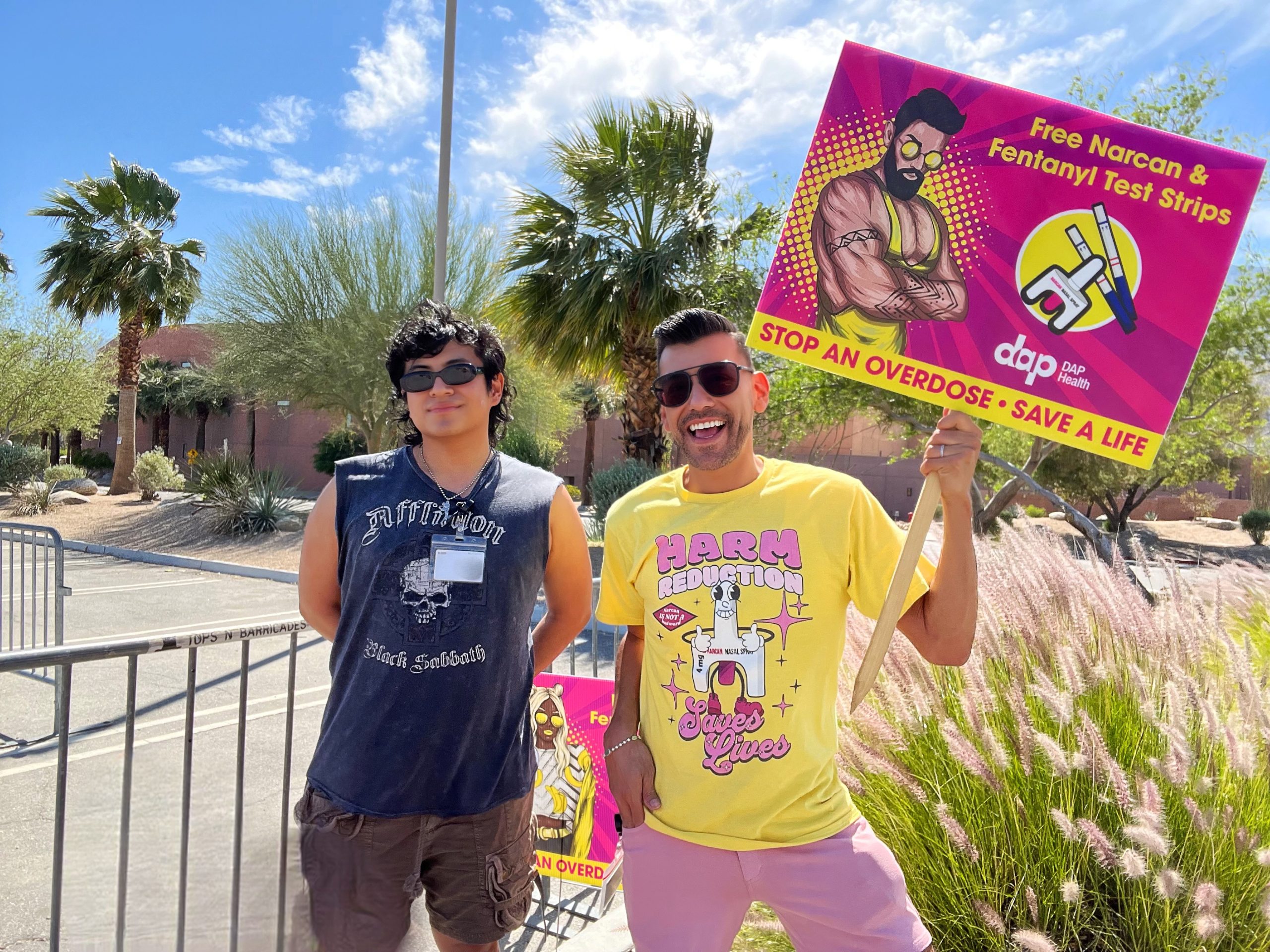
Photo: Alexis Molina, DAP Health Community Health Worker (left) and Manny Muro, DAP Health Community Health Diagnostic Testing & Outreach Supervisor (right)
Safety First – DAP Health’s Harm Reduction Team Returns to Coachella
DAP Health's Harm Reduction team returned to the Coachella Valley Music and Arts Festival for the second year in a row to keep revelers healthy and informed at select shuttle stops in Palm Springs.
Festivals are a time for fun and adventure, but it's no secret that when substances are involved, things can sometimes quickly go south. Aimed at preventing and reversing overdoses, DAP Health’s Harm Reduction program takes a hands-on approach when it comes to keeping our desert communities and visitors safe from preventable incidents.
Standing in the blazing sun in near-100-degree heat, the Harm Reduction team stayed committed to saving lives. It distributed a total of 768 doses of Narcan (the brand name for the nasal spray formulation of naloxone, known to temporarily reverse opioid overdose) and 300 fentanyl testing strip kits over the course of the two festival weekends, empowering more than a thousand festivalgoers to make informed choices and have a safer Coachella experience.
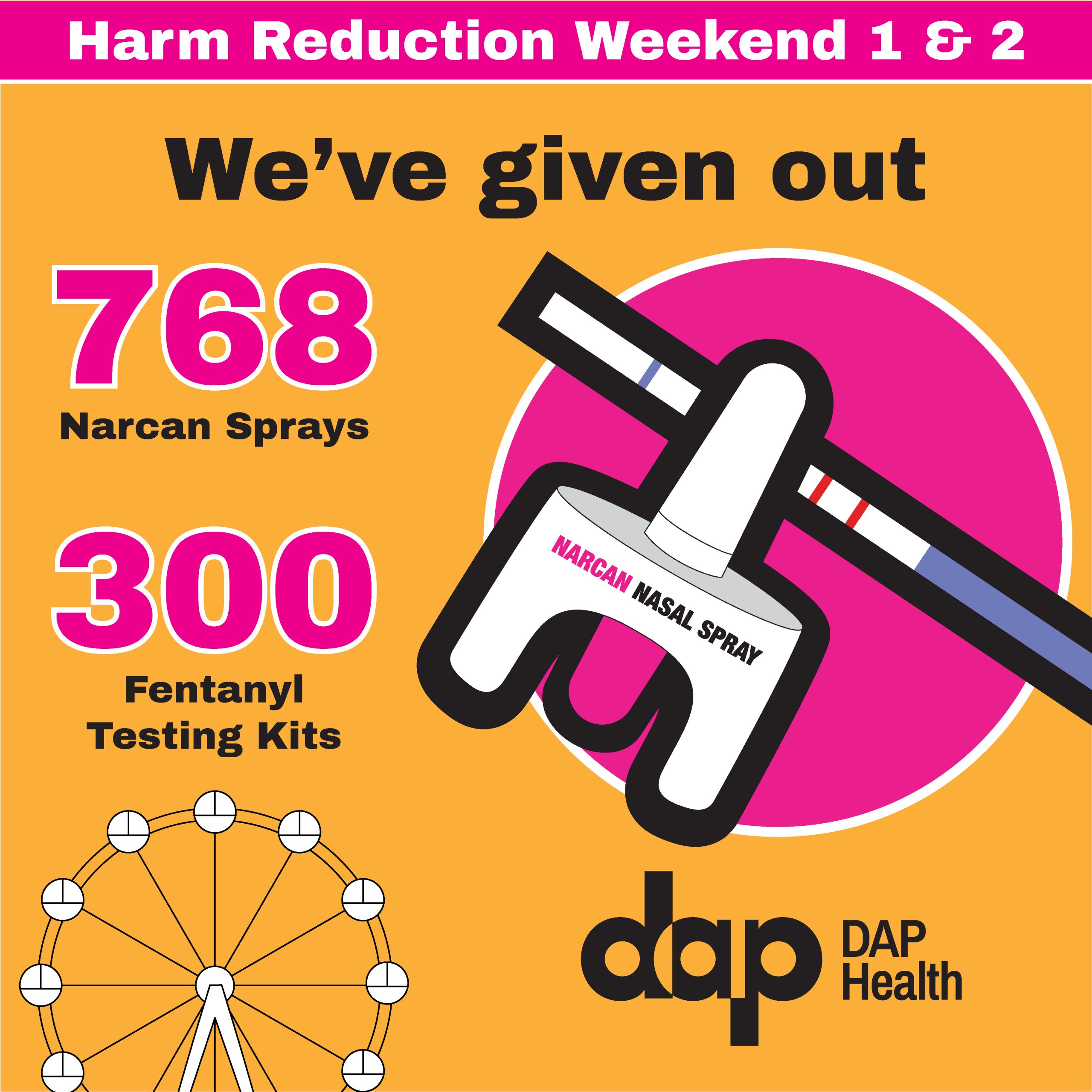
Last year, the team distributed 422 fentanyl testing strip kits and 286 Narcan sprays.
DAP Health's Harm Reduction program goes beyond just Coachella. It enables people to use substances more safely through education and connection to care year-round, allowing them to live their healthiest life.
Play Smart, Stay Alive: To learn more about DAP Health’s Harm Reduction program, please click here.
